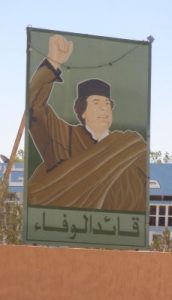
From wikipedia.org / © Scottish Government

From wikipedia.org / © ScottishPolitico
The devil and the deep blue sea. A rock and a hard place. Scylla and Charybdis. These are a few phrases that spring to mind when I think of the choice facing members of the Scottish National Party as they vote for a new party leader and First Minister of Scotland to replace Nicola Sturgeon, who a month ago announced her intention to resign from those posts and last week made her final appearance at First Minister’s Questions in the Scottish Parliament.
Neither of the options offered as Sturgeon’s successor is particularly inspiring. There’s Humza Yousaf, current Scottish Cabinet Secretary for Health and Social Care, and previously Minister for Transport and the Islands. And then there’s Kate Forbes, currently Cabinet Secretary for Finance and the Economy.
Okay, there’s also a third candidate in the running, Ash Regan, former Minister for Community Safety. But, working on the assumption that the average SNP member has at least a couple of braincells in his or her head, I imagine Regan has zero chance of prevailing. Her big idea so far has been to have an ‘independence-readiness thermometer’ displayed in a major Scottish city. Plus, much of her support actually seems to lie outwith the SNP, i.e., among the opportunists, grifters, misfits, transphobes and Scottish-indy ultras who joined embittered former SNP leader, former Russia Today presenter and generally-accepted lech Alex Salmond when he set up the Alba Party as a way of getting revenge on Sturgeon and his old party (and secured 1.65% of the votes cast in the subsequent Scottish parliamentary election).
Anyway, onto the two real candidates. Yousaf strikes me as a bloke with his heart in the right place… But his performance in government has been patchy and he’s prone to making gaffes, most recently when he met with a group of Ukrainian women and inquired, “Where are all the men?” Okay, whilst being in charge of Health and Social Care in Scotland, he’s been under constant bombardment from Scotland’s newspapers, which are almost without exception right-wing, conservative, unionist and shite-holey – the Scottish Daily Mail, the Scottish Daily Express, the Scottish Sun, the Scotsman, the Herald and the Scottish edition of the Daily Telegraph. While their beloved Conservative Party has, in government in London, under the leaderships of Boris Johnson, Liz Truss and Rishi Sunak, wallowed in mindboggling amounts of corruption and indulged in mindboggling amounts of incompetence, their response has been to shriek and scream that the Scottish government is equally, if not more, of a basket case. They’ve fixated on and magnified every fault and incompetence they can discover and never stopped to draw breath in their criticisms. Generally, their modus operandi has been, in the words of far-right strategist Steve Bannon, to ‘flood the zone with shit’. “Okay,” they seem to cry, “Britain is crap! But Scotland is even crapper! And an independent Scotland would be even, even crapper!”

From wikipedia.org
But I don’t think Yousaf has the dexterity, the gravitas and the general intelligence to establish himself the way Sturgeon did – who, though most of the mainstream media in Scotland hated her, was able to rise above their carping, convey a sense of competence, and convince everyone bar the most rabid Scottish Conservative that she was much more effective as an administrator than, say, the venal Johnson or the barking-mad Truss. Unfortunately, I can’t see how Yousaf will escape being portrayed by the media as a bungling klutz – in the same way that they succeeded in discrediting former Labour Party leaders like Michael Foot (supposedly a befuddled old fool who went to Remembrance services at the Cenotaph dressed as a scarecrow), Neil Kinnock (a Welsh windbag who tripped over on a beach and fell into the sea) and Ed Miliband (a two-kitchen-owning faux socialist whose dad hated Britain and who couldn’t eat a bacon sandwich properly). That said, I doubt if they’ll be able to absolutely demonise Yousaf like they did with Jeremy Corbyn.
Incidentally, it’s interesting to compare Yousaf’s troubled tenure as Health Secretary with that of Sturgeon, who held the brief for a couple of years when Salmond was First Minister. And if anyone says they don’t remember anything of Sturgeon as Health Secretary – well, that says a lot for her skill in keeping it a non-issue at the time.
From what I’ve seen of her, in purely political terms, Kate Forbes seems the most capable of the candidates. But there’s a big problem. She’s a member of the Free Church of Scotland and claims its tenets are ‘essential’ to her ‘being’ – which would be fine if her particular Kirk treated people from all walks of life non-judgementally, but it doesn’t, and Forbes has ended up saying some things that cross the line into intolerant, Bible-bashing crankery. She’s said she would have voted against same-sex marriage, and stated her opposition to the Scottish government’s trans-friendly Gender Recognition Act, and spoken out too against abortion and sex outside of marriage. This has put a lot of noses in the SNP out of joint. For instance, the party’s deputy leader in Westminster Mhairi Black, a lesbian who got wed last year, has tweeted that she was ‘incredibly hurt’ by Forbes’ stance on gay marriage.
Perversely, some right-wing commentators who, in right-wing news outlets, regularly castigate Forbes’ party have ridden to her defence during the controversy about her religious views. On February 23rd, Fraser Nelson, editor of bilious far-right magazine the Spectator, wrote an opinion piece in the no-better Daily Telegraph under the headline PROTESTANTS ARE NOW HOUNDED OUT OF POLITICS, AS KATE FORBES HAS SHOWN. A day later, in Rupert Murdoch’s Times, the fogey-ish author and Evelyn Waugh wannabe A.N. Wilson penned a similar-minded piece entitled THE HOUNDING OF KATE FORBES SHOWS GODLESS SQUAD HAVE WON. And if the moral support of Nelson and Wilson wasn’t enough to drain all street credibility out of Forbes, and send it down a hole deep enough to reach Australia, the ridiculous Jacob Rees-Mogg got in on the act too. He wrote in a Daily Mail column that: “The last Scottish female public figure to be treated so badly for her religion was Mary, Queen of Scots, who was chased out of her country and eventually beheaded by her cousin Elizabeth for her Catholicism.”

From wikipedia.org
Oh, and the centre-right journalist and commentator Chris Deerin – director of the think-tank Reform Scotland, crooner with arthritic dad-rock band the Fat Cops, worshipper of Ruth Davidson and, mind-shreddingly, Scottish Editor for the supposed left-leaning New Statesman – has been carrying a torch for her recently too. Just in case the Kate Forbes Media Fan Club didn’t sound hellish enough.
Personally, I suspect the reason why so many personages in the right-wing press are currently batting for Forbes is because they’re licking their lips with anticipation about what might happen if she wins. They’d have a field-day reporting on the latest messes involving the First Minister of Scotland as, speaking her Free Kirk mind, she upsets gay people, trans people, unmarried mothers, women who’ve had abortions, etc. She could also very easily piss off Scotland’s sizeable Roman Catholic community, since the brand of old-school Scottish Presbyterianism she adheres to is not exactly known for its love of the Pope and the Church of Rome. And her social conservatism would probably mean the SNP’s current, informal governing alliance with the Scottish Green Party would end.
All in all, the Yousaf / Forbes leadership race looks like a lose-lose situation for the SNP and a win-win one for the right-wing mainstream media that would love to see the back of the party. Meanwhile, I have a feeling that a lot of people in the Scottish independence movement who’d expressed impatience, dissatisfaction and frustration with Nicola Sturgeon’s performance in recent years – well, apart from those bampots in Salmond’s wee faction – will soon realise how much they miss her.

From wikipedia.org / © Scottish Government
















